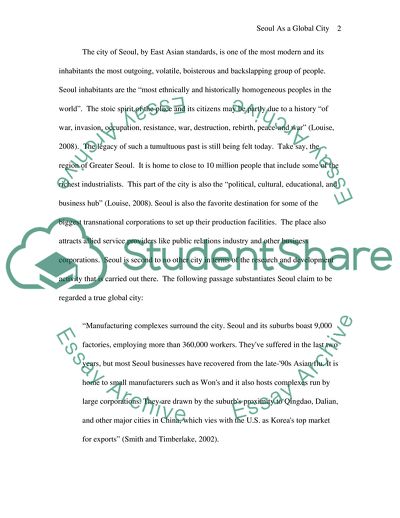Cite this document
(Seoul as a Global City Essay Example | Topics and Well Written Essays - 1500 words, n.d.)
Seoul as a Global City Essay Example | Topics and Well Written Essays - 1500 words. https://studentshare.org/geography/1712939-seoul-as-a-global-city
Seoul as a Global City Essay Example | Topics and Well Written Essays - 1500 words. https://studentshare.org/geography/1712939-seoul-as-a-global-city
(Seoul As a Global City Essay Example | Topics and Well Written Essays - 1500 Words)
Seoul As a Global City Essay Example | Topics and Well Written Essays - 1500 Words. https://studentshare.org/geography/1712939-seoul-as-a-global-city.
Seoul As a Global City Essay Example | Topics and Well Written Essays - 1500 Words. https://studentshare.org/geography/1712939-seoul-as-a-global-city.
“Seoul As a Global City Essay Example | Topics and Well Written Essays - 1500 Words”. https://studentshare.org/geography/1712939-seoul-as-a-global-city.


